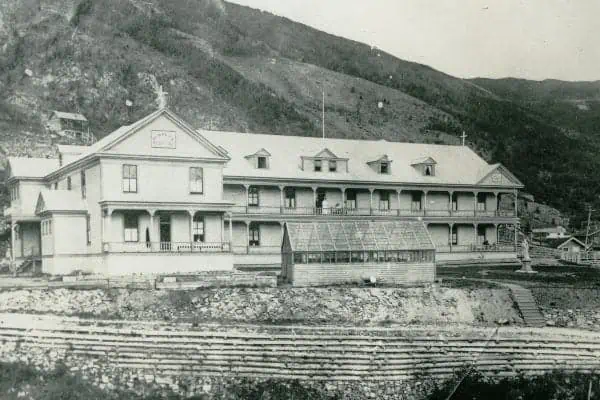Dawson survives as it does because it had prominent champions among the wordsmiths of the 20th century.
Without the stories of Jack London, the poetry of Robert Service and the non-fiction of Pierre Berton, I doubt if any amount of gold could actually have bought the town the brand recognition that came from their typewriters.
Yes, they did all use typewriters, though Service wrote first drafts by hand. Berton never did take up a word processor, at least as far as his work was concerned.
Without them, the best we could have hoped for was to become the Yukon’s version of Barkerville, B.C., which, though a charming park, is not a living community.
I sometimes use this space to talk about their work, but this year I’m going to discuss their buildings, which Dawson has neatly arranged on Eighth Avenue along what I’ve been calling the Writers’ Block for the last 15 years or so.
Yes, it’s a pun, since none of these gents either believed in or ever suffered from that particular form of verbal constipation.
The Jack London Center occupies the corner of Eighth Avenue and Firth Street. It is anchored by the cabin itself, or the bottom half of it.
The deal when it was moved here from Henderson Creek was that we got half and Oakland, California got the rest. The distinctive cache next to it is a triumph of art over reality.
Jim Robb created a well known painting of the cabin in which there was a cache, and it was such an iconic image that the Klondike Visitors Association (KVA), which owns and manages the site, added one.
The large log building is the museum, run by Dawne Mitchell and built around the research and personal collection of journalist and author Dick North.
This year the walls are a bit less dense with documents than in the past as many of them have been digitized and can be viewed on the computer station at the back of the room. The benches have comfy cushions this year too.
There have been bigger changes up the street at the Robert Service Cabin. The site has been landscaped and the cabin refurbished inside.
The aged seating for visitors has been replaced with a well-designed, roofed area, which protects against sun or rain and leaves the cabin itself more visible from the avenue.
More controversial was the decision to replace the venerable sod roof (which had been there for most of the cabin’s life) with a tin roof of the type that was there when Service lived in it.
There were complaints about Parks Canada’s decision to do this, but I suppose it makes sense in terms of maintenance, security and fire protection. In which case, it’s a good thing they got the job nearly finished before the federal government cut the agency’s budget.
Word is that next year they will have trouble finding money to plant flowers at some of their more prominent sites.
Just across the street, on the corner of Eighth and Hanson St., is Berton House, about which I have written extensively here since the spring. It is managed by the Writers’ Trust of Canada, with the assistance of the KVA and the Dawson Community Library.
It is open to the public only a few times during the year, though tourists have been known to wander in at all seasons with cameras at the ready, in spite of all the signs telling them not to.
Berton bought his boyhood home back in the late 1980s and we opened it as a writers’ retreat in 1996.
Sixty writers have lived there in three-month terms since then, and it has the reputation of being one of the most sought after retreats in the country.
Thus do we celebrate the memories of the scribes that helped to make us known around the world. We have also used their names to mark the streets in the subdivisions that branch out from the road leading to the Midnight Dome.
I call that whole development Literary Heights, but that’s another story.




